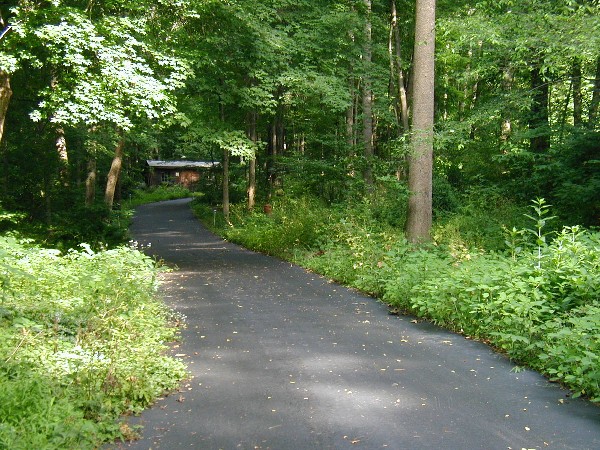

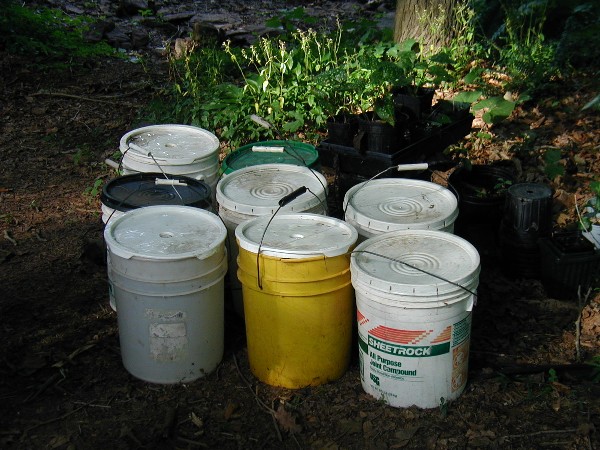
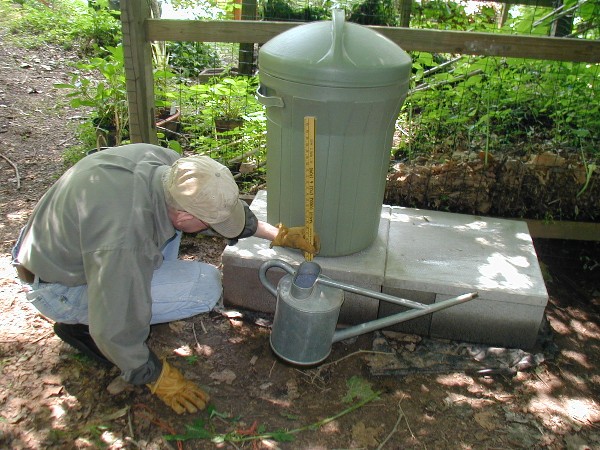
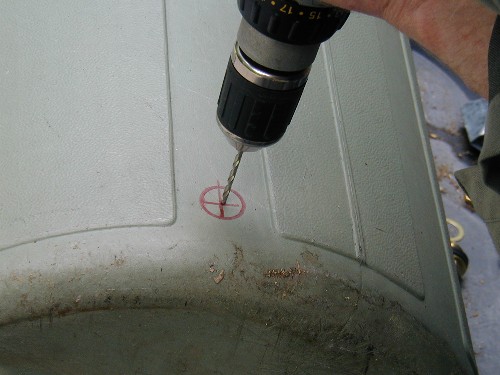
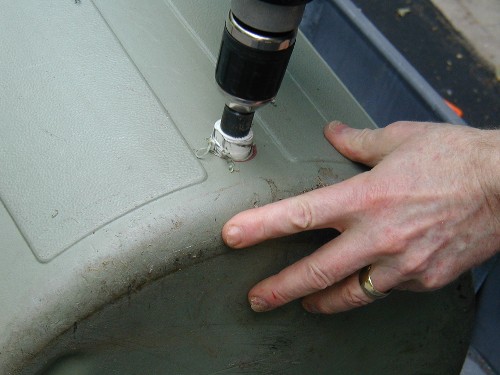
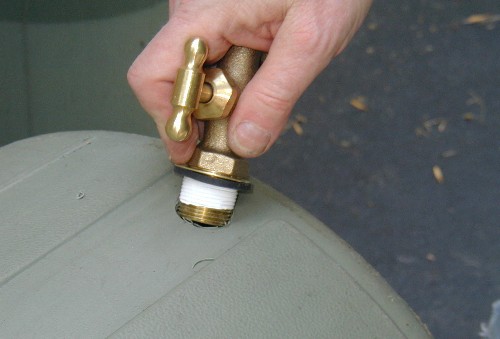
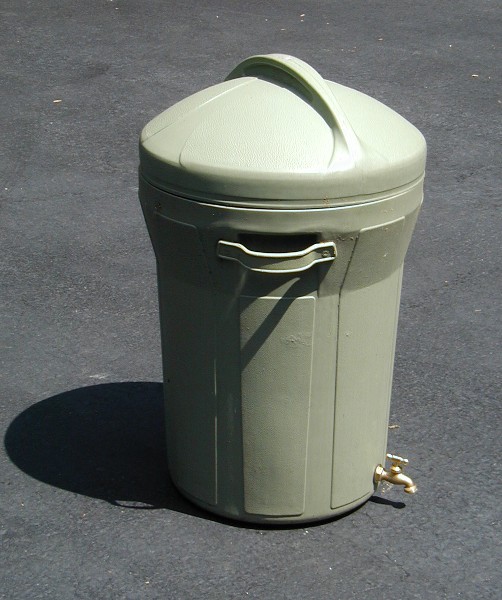
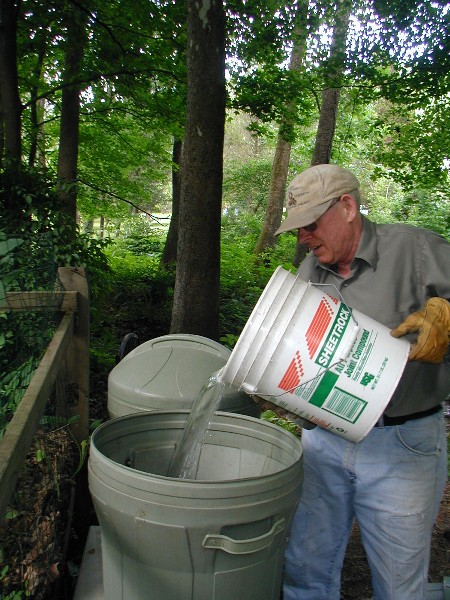
Glyndor House at Wave Hill is the setting for art exhibitions. In April 2007 the focus was on Emily Dickinson, with the work of ten different artists who immersed themselves in the poet's live and writings, to create works of art inspired by her relationship with nature. The current show, through August 26, 2007, features the work of eleven artists exploring Henry David Thoreau's essays, speeches, and journal entries. Many of these artworks were created specifically for this exhibition.

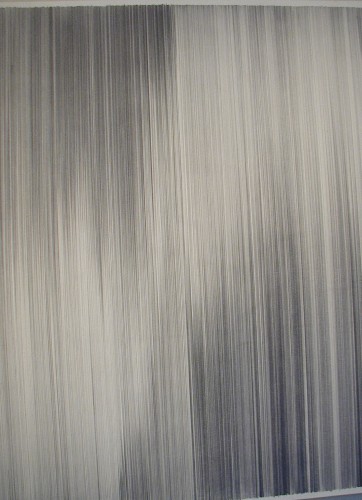
Subtle variations in intensity and the full spectrum of graphite hardness form this deceptively simple work, one which develops a rich complexity with close study. While we think of him as a writer, a keen observer of nature, and someone who concerned himself with the relationship of the individual to society, Thoreau was also an inventor. In 1821 his uncle, Charles Dunbar, discovered graphite, also called plumbago, in New Hampshire. He set up a pencil making factory with his brother-in-law, John Thoreau, Henry's father. Who, later on, began manufacturing pencils in Concord, Massachusetts. The graphite was not of high quality. One of Henry Thoreau's inventions (he worked periodically in the family business) was the use of clay as a binder, mixed with the graphite to create a variety of pencil leads of graduated hardness.
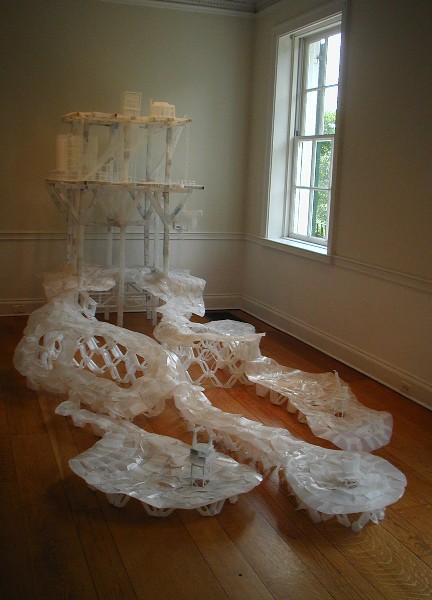
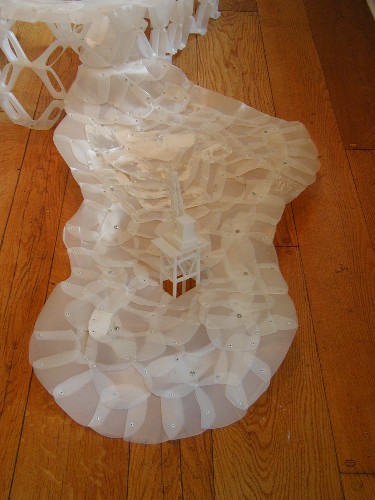
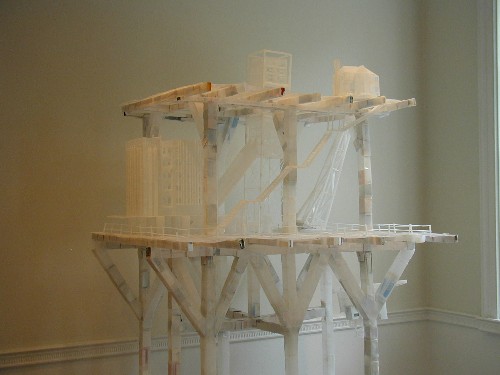
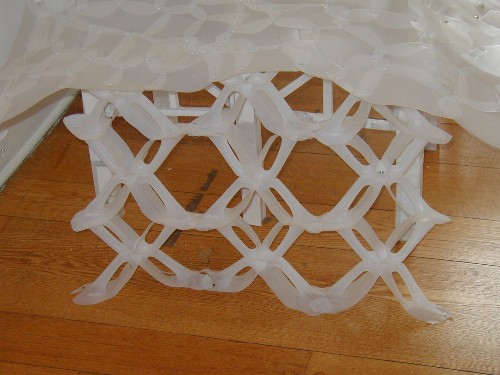
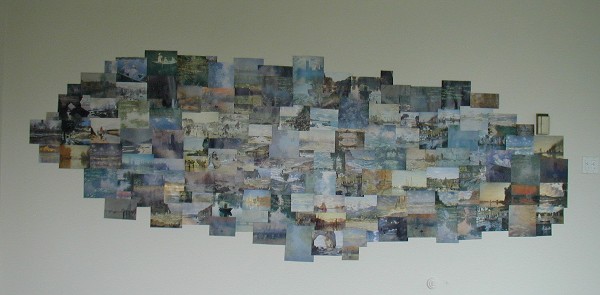
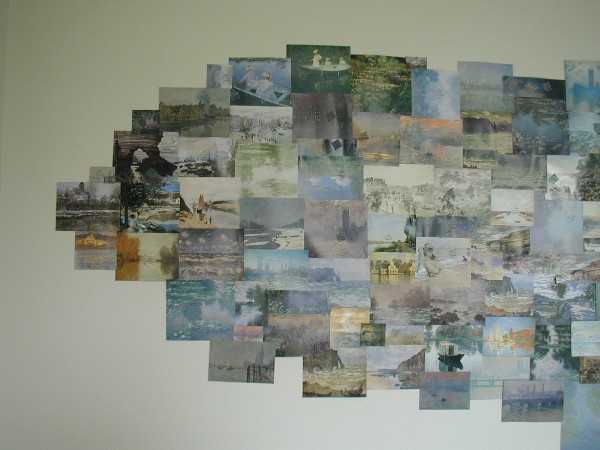
.
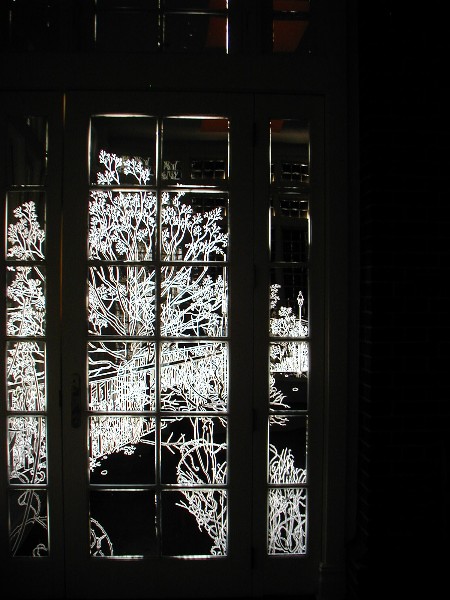
.
.
Back in last winter's short, chill days the Tohickon Garden Club planned a summer visit to Wave Hill. We might car pool. Perhaps charter a bus. The later was our transportation of choice, and a good choice it was too, as the weather was hazy, hot, and humid. No matter, a group of like-minded friends fond of plants and gardens are sure to enjoy themselves whatever the weather.
As I said last week, after the inaugural opening of the Sunday Farmers Market at Dvoor Farm, "Let's hope there will be more vendors as we get further into summer. " Today I was delighted to see that indeed there were more vendors: an additional purveyor of produce, someone selling handcrafted soaps and toiletries, a man with lovely young native trees, such as red oak, raised from seed, a couple of women selling an assortment of ordinary perennials that looked as though they were dug the day before and hastily potted in clay-ey garden soil, and a quartet of musicians with a bass viol, guitar, banjo, and fiddle. Lovely! A Sunday morning stop at Dvoor Farm is clearly going to be part of my summer-into-early-fall routine.
And this one was no exception. The occasion: the evening soirée of the Watnong [New Jersey] Chapter of the North American Rock Garden Society. This year the event was held at Willowwood Arboretum, located at 300 Longview Road in Chester Township, New Jersey. Last night had a downpour, the morning was overcast and damp, and by afternoon it cleared to one of those perfect summer evenings.
I adore garden parties, don't you? And today is one of my favorites, the annual almost-summer event at Atlock Farm, 545 Weston Canal Road in Somerset, New Jersey. Oh sure, Ken Selody calls it an Open House. But we get to stroll around his beautiful demonstration gardens, there's summertime picnic food provided, and plants to purchase. How could it be better? Well yes, there's the weather to consider. Someone was listening to the request, because it was sunny, on the hot side of the thermometer, with cool breezes wafting from the shady parts of the garden. Just lovely.
The land was originally owned by William Penn, who passed it on to his sons. In 1738 they sold it to John Kase, a German immigrant. Most recently used for horse and cattle trading, the Dvoor family farmed and sold livestock on the farm since the late 1800s. It is a classic example of the historical agricultural character of Hunterdon County. The farm includes a Dutch stone farmhouse constructed in 1790 and three barns that represent the history of barn building in the nineteenth and twentieth centuries. Hunterdon Land Trust Alliance became the owners of Dvoor Farm in December 1999.
This is a new community farm market. Let's hope there will be more vendors as we get further into summer. After all, mid-June is still early in the season. It will be nice to have a convenient source for locally grown produce. They're planning to offer a variety of fruits, vegetables, and herbs, meat, and cheese. One vendor was selling delicious cheddar and smoked cheddar cheese made from raw milk. Someone had organic popping corn. And there was buffalo meat for sale too. My understanding is that only farm products will be offered, no bakers or craft people such as quilters.
It is not a good thing to have pots sit down directly on the ground, on a deck, on the floor. Water drips out the drainage hole(s) and mars the floor or stains the deck. In fact, water drains more poorly when the pot is in direct contact with a flat surface. It can, over time, clog with dirt and debris. Earthworms and other soil-based critters can climb out of the ground and into the pot. Have I convinced you? So the goal is to elevate the pot on a stand. I like slatted wooden stands. One style is made from 1 inch X 3 inch lumber, cut to 4 feet long. Four slats are spaced so the overall width is 15 5/8 inches wide, held together with two cross pieces. Why this width? It fits nicely over a horizontal concrete block. The other style is made from 1 inch by 4 inch lumber, cut to 14 inches in length. Three pieces for the top, two cross pieces, and four "feet." Paul has a well equipped workshop. He makes the plant stands. My role is as go-fer and assistant. I go fer the lumber and assorted supplies, hold things, mark board for cutting, apply glue, clean up, and finish the assembled plant stands. Here is how it works.
Today was quite damp and overcast after last night's rain, a good time to move yet more plants out of the greenhouse. I was cleaning up the area on either side of the front walk, including old leaves blown under a display stand supported on a couple of concrete blocks. See what I found!
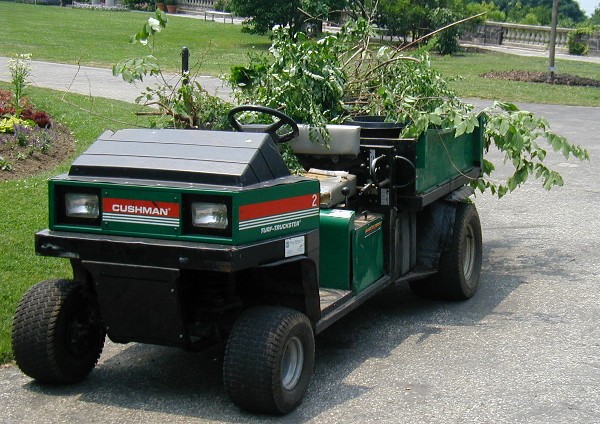
Or does it offer possibilities?
Granted, the prunings seen here are not especially sturdy. But the concept is the same.
Waste not, want not. Be creative.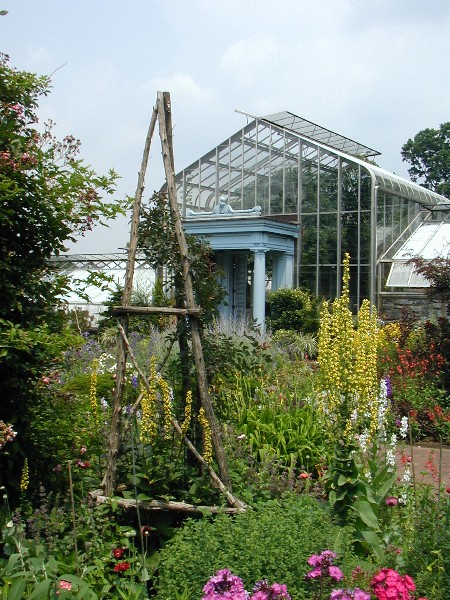
What's a tuteur? Quoting from Taylor's Dictionary for Gardeners
(by Frances Tenenbaum, published by Houghton Mifflin Company, 1997)
"From the French for "trainer," a classic French design
for a trellis is the shape of an obelisk."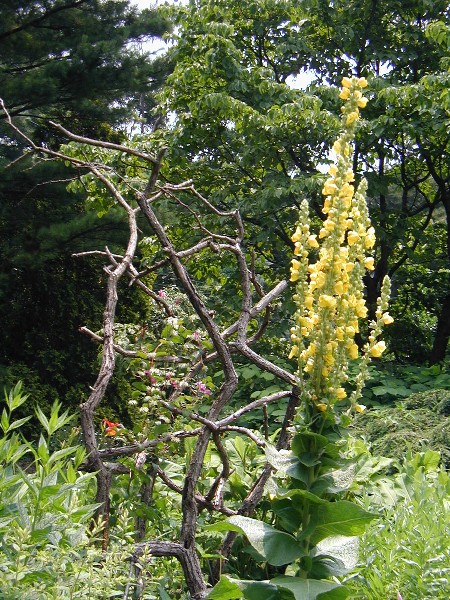
(The verbascum looks sturdier.)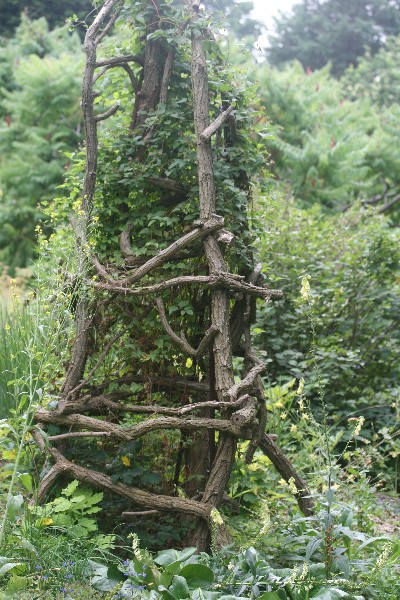
to the Adirondack rustic fence and arbor of the front garden
is a suitable support roses and / or clematis.
from what's on hand. Waste not, want not.
Be creative. Art in the garden.

The Adirondack rustic style fence and arbor surrounds the front garden. And there's no such thing as the "June slump"
at Wave Hill, it's magnificently in bloom.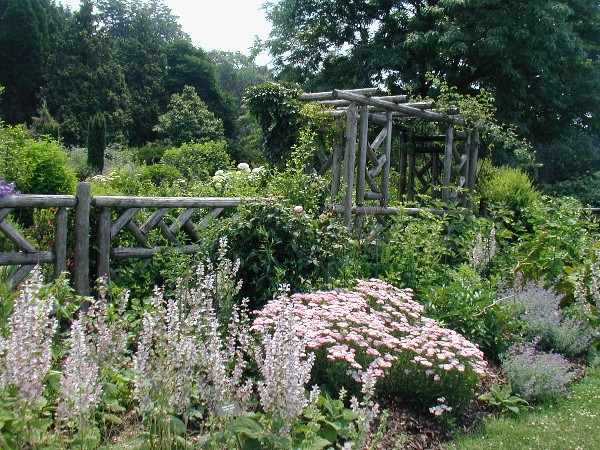
and a soft pink yarrow, Achillea cultivar.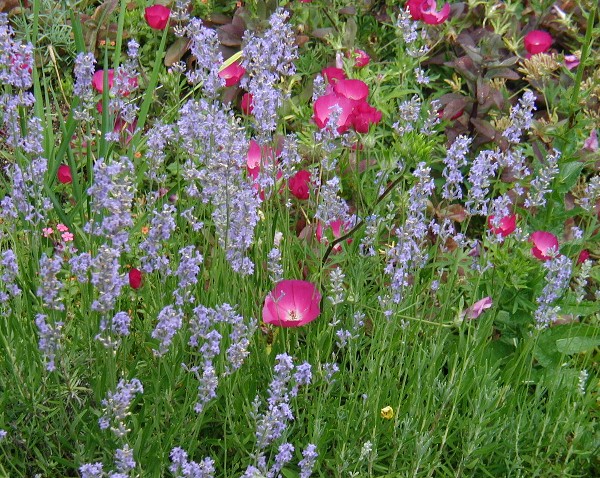
native to the arid Plains States of North Dakota and Wyoming, Missouri, Oklahoma, Texas, New Mexico, and Utah.
Wonderful the way the two plants weave together into a tapestry, so characteristic of "the Wave Hill style."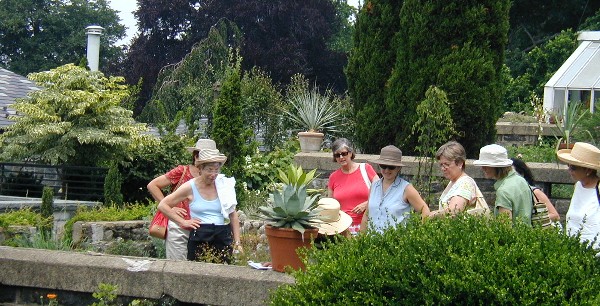
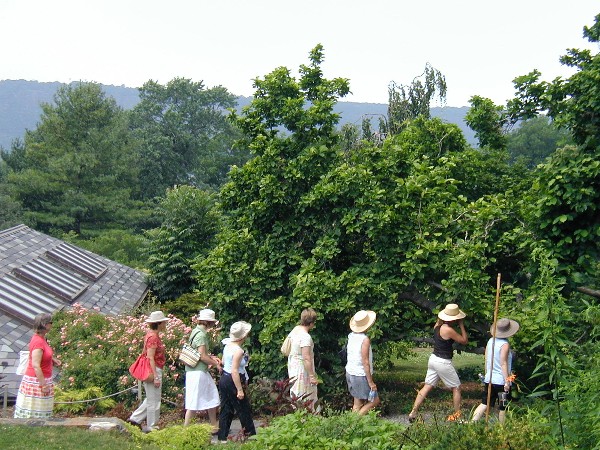
I had a second large iced latte, for refreshment, replenishing fluids, and re-energizing.
Shade beckons.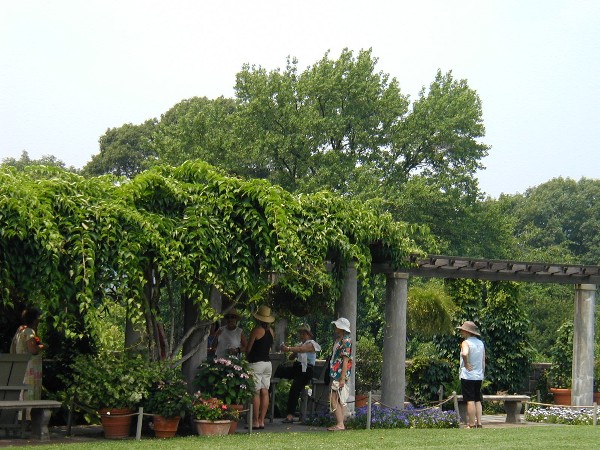
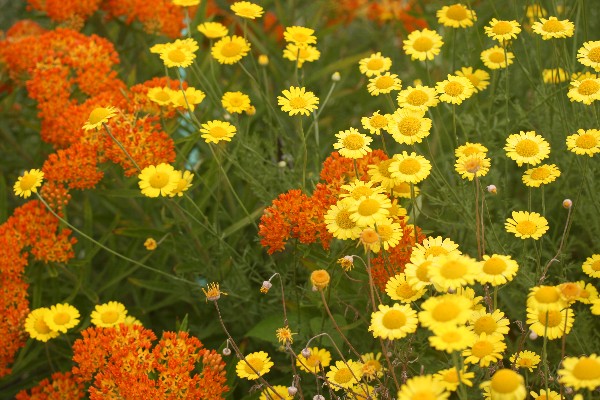
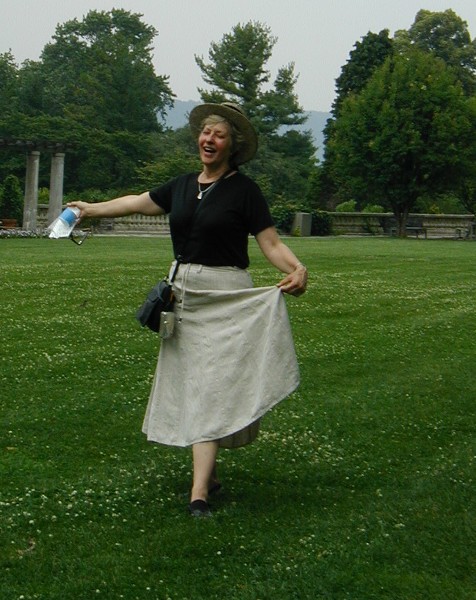
as Shirley campily vogues her way across the lawn.
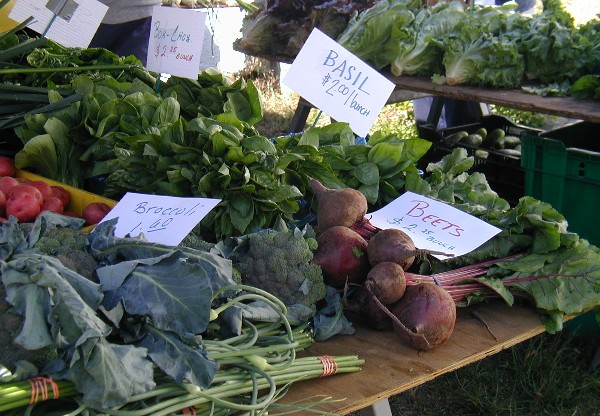
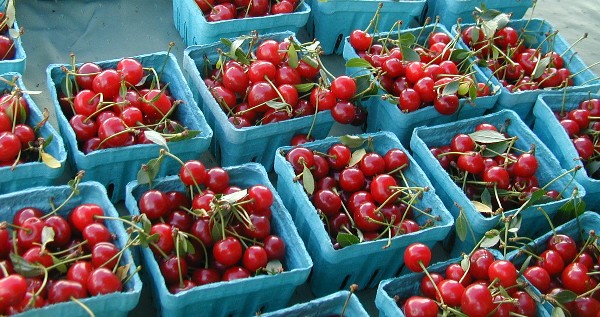
Wonderful for those who would not otherwise have access to these hard-to-find pie cherries.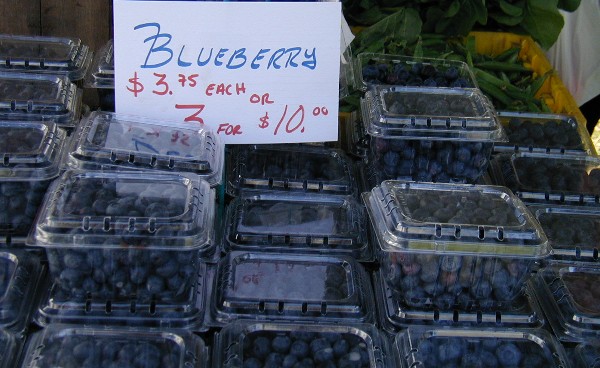
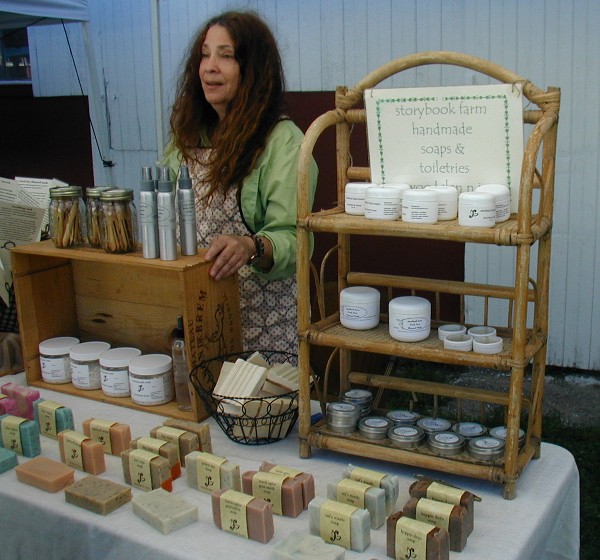
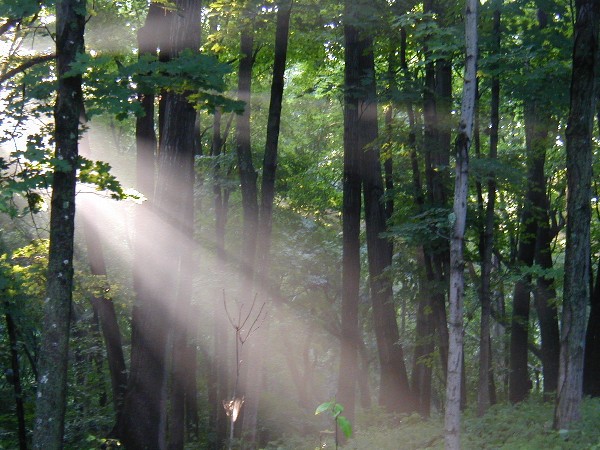
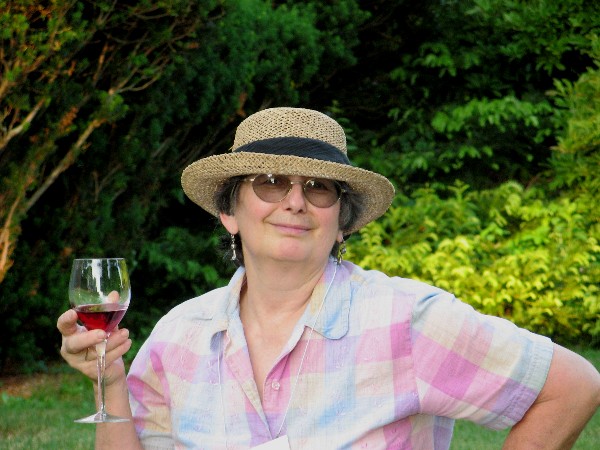
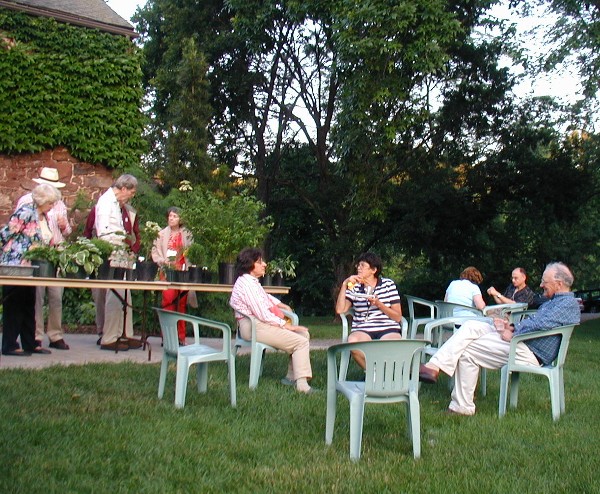
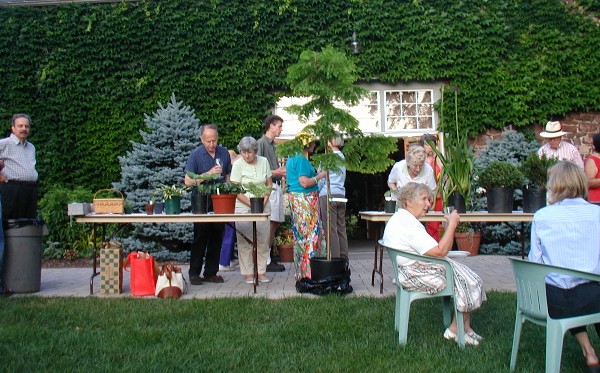
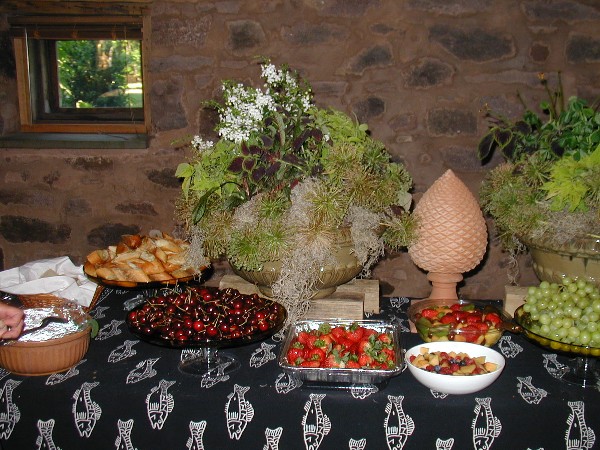
Some potluck dishes and others provided by the chapter, beer and wine and lots of desserts.
Kudos to Benjamin, she feeds us well.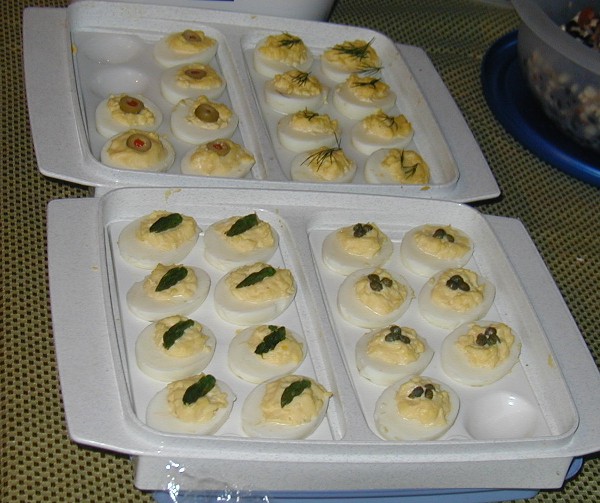
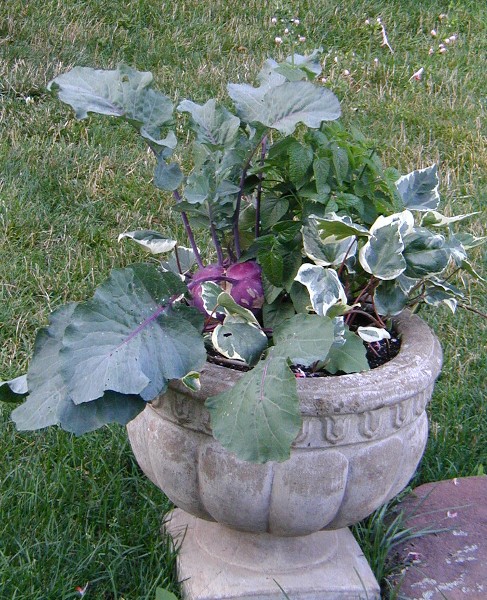
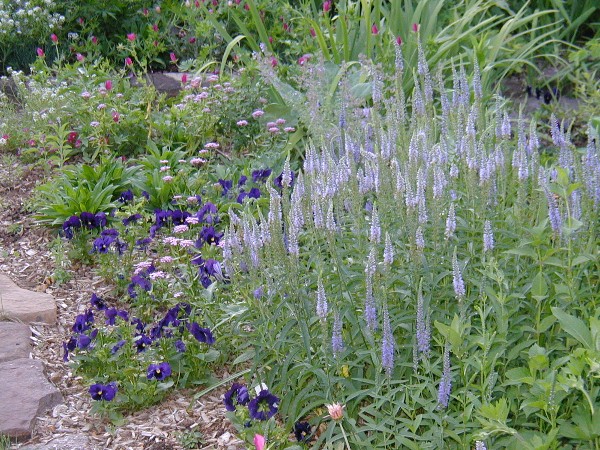
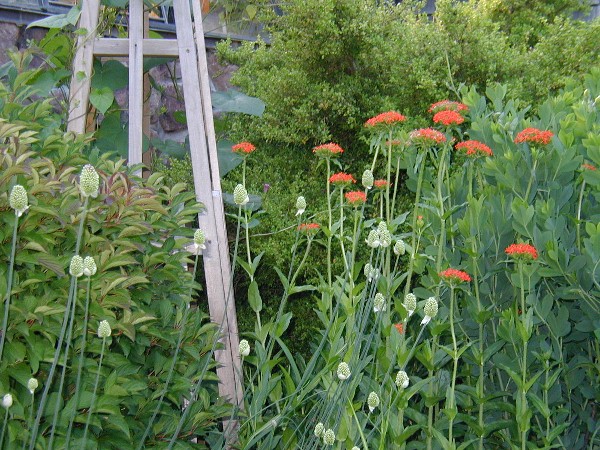
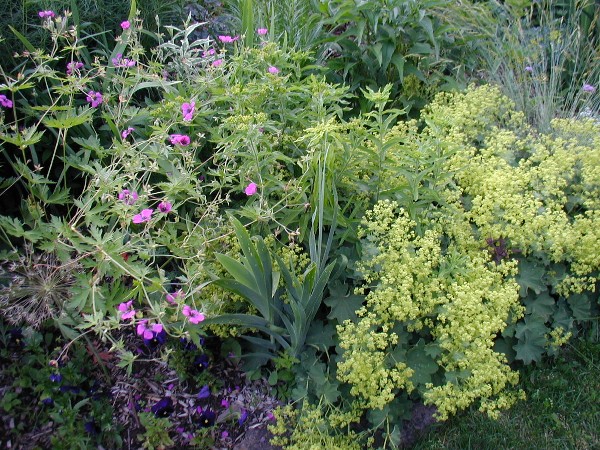
and the fading sphere of Allium christophii.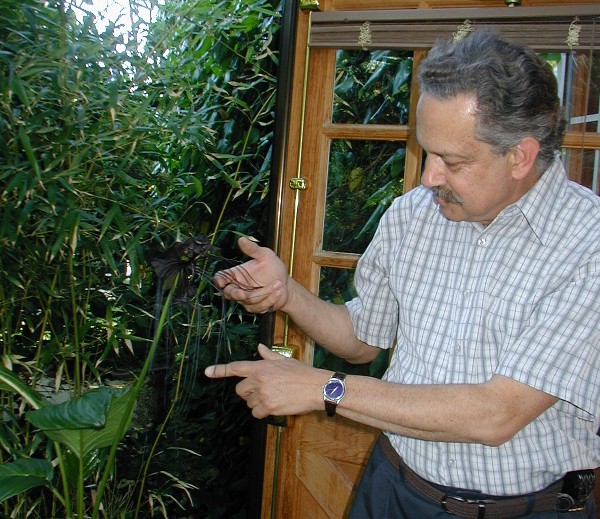
It's not an easy thing to grow, demanding shade, humidity, good air circulation, drainage coupled with moist conditions.
So what's the excitement about? This!
Satiny purple-black, upward facing buds, flowers that nod as they individually mature, and funky whiskers trailing down.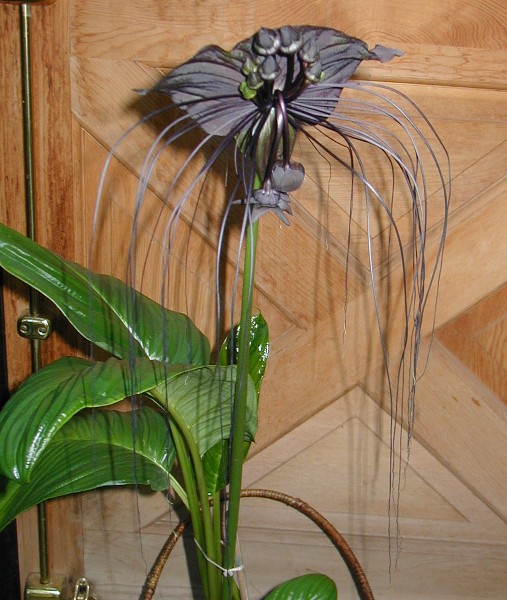
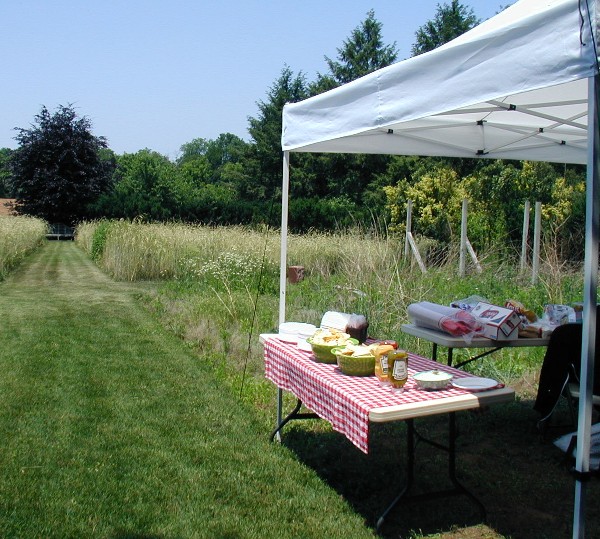
Grilled hot dogs with finely minced onion, chili, and the usual green relish for toppings,
potato salad, bean salad, and for drinks: soda, bottled water, and a keg of root beer.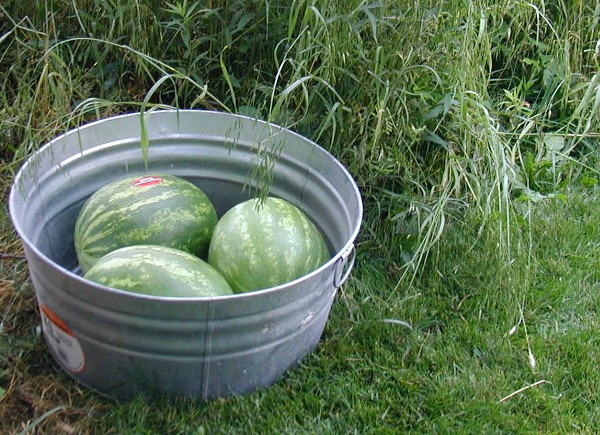

white, called pearl, and soft gray, called lavender. Periodically they'd cackle,
as Guineas do. No idea what caused the occasional bursts of excitement.
Odd shape: substantial bodies topped with a long skinny neck and those little wattled heads.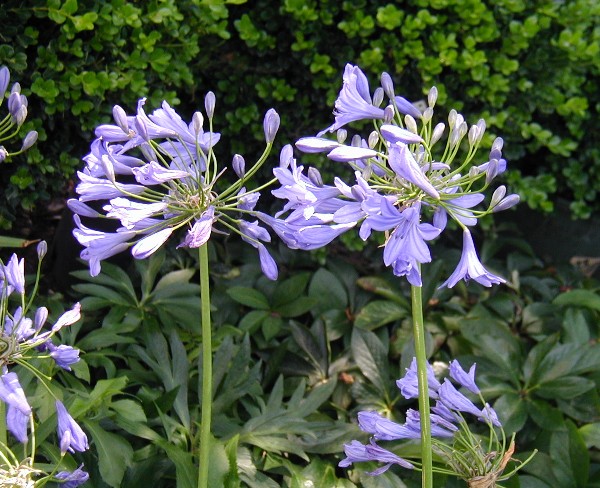
Such as these magnificent Agapanthus, lily of the Nile, in sky blue.
If I didn't already have a potful at home for sure I would have bought one.
They're easy to keep, even over winter when benign neglect is the best method.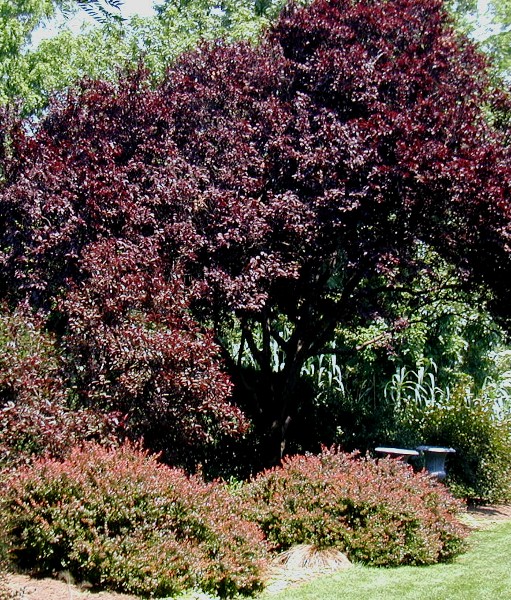
I'm especially fond of this pairing of thundercloud-dark purple-leaved plum, accented by
billowy mounds of softer copper-colored foliage. But then, you know how well foliage works for me.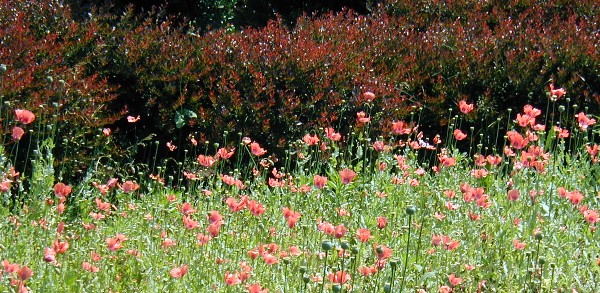
A dark background provided by Berberis thunbergii atropurpurea sets off the airy flowers
of these graceful salmon pink sleepytime poppies.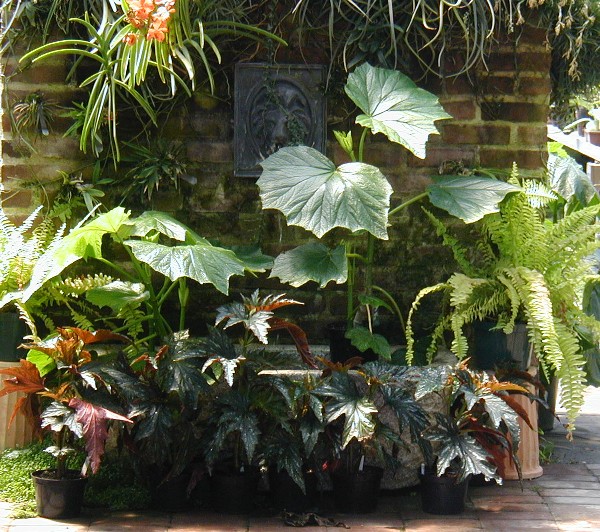
Four ginormous lemon trees have been moved outdoors to one of the garden rooms.
There's still some potted plants embellishing this greenhouse. A brick wall
with a traditional lion headed fountain serves as backdrop to ferns and fabulous begonias.
(Those large leaves belong to Begonia gunnerifolia.)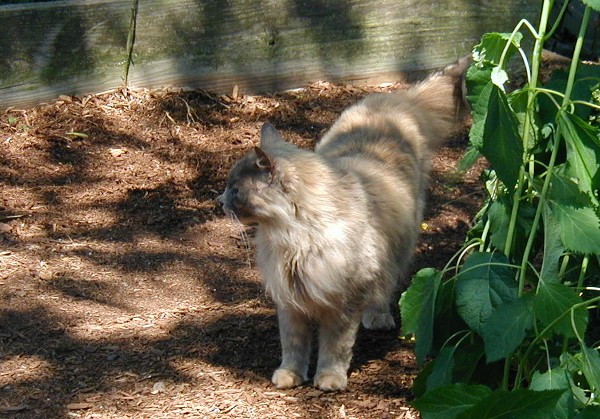
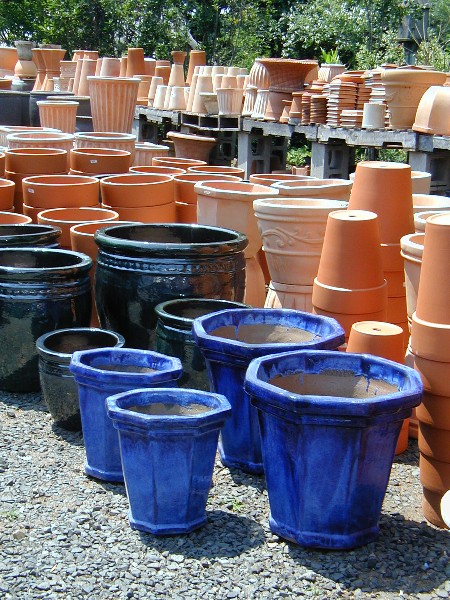
One woman bought a huge fuchsia-flowered geranium, so big it had a trellis / cage to support it,
and had it then-and-there repotted into a cobalt blue glazed pot. Stunning. Or, for something more subtle,
consider one of those agapanthus. Options, possibilities, and garden dreams at Atlock's Open House.
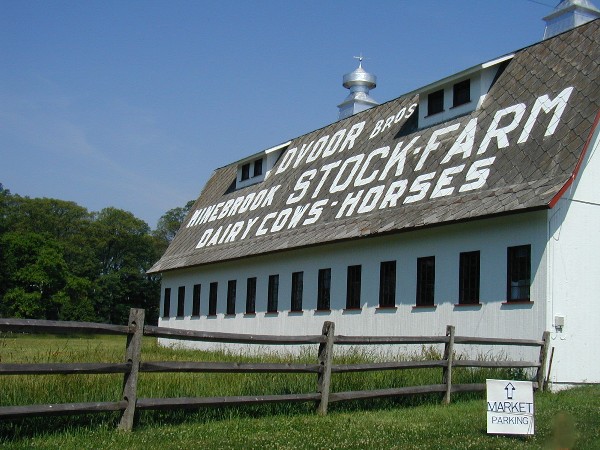
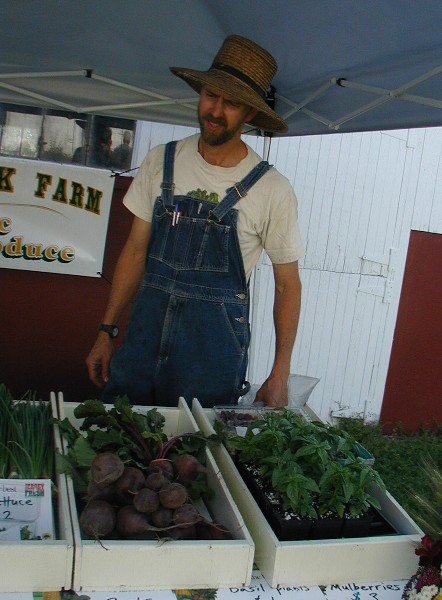
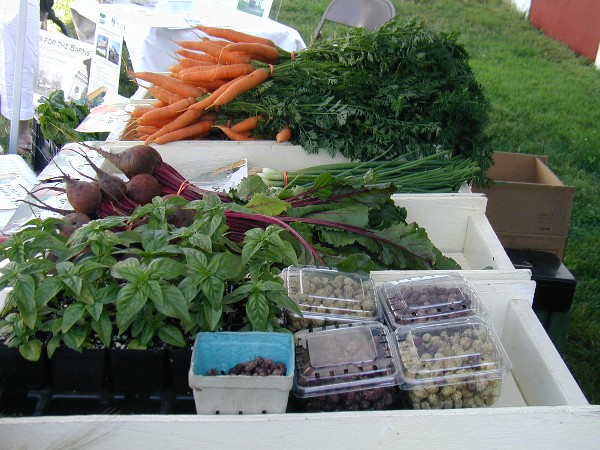
rainbow Swiss chard, basil plants, mulberries,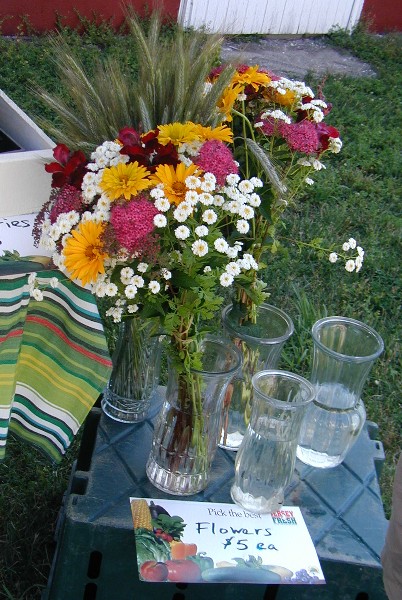
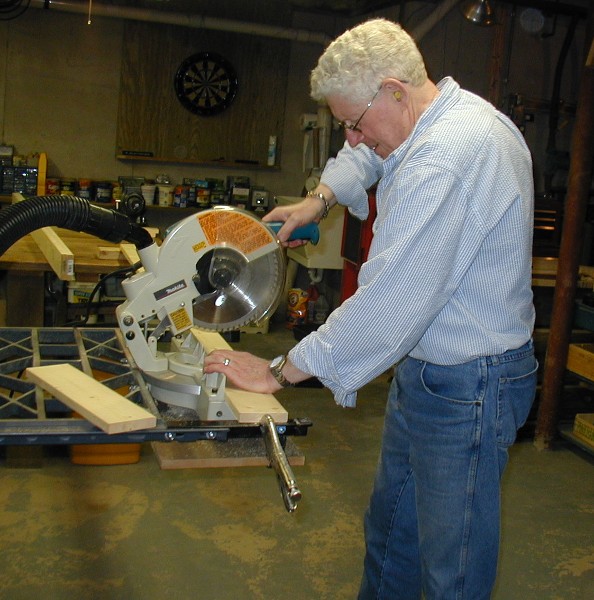
In reality the boards are 3/4-inch by 3 1/2 inch by 8-foot or a little longer. First we measure the length.
If it is over 8 feet a very thin slice is taken off the end to neaten it up. Paul then measures 14 inch length.
Notice the lock-jaw pliers clamped to the end of the chop saw table. With the cut end of the board snug against this "stop"
the saw kerf will be at 14 inches. Cut, remove piece, slide board down to stop, cut, repeat - much quicker than measuring each piece.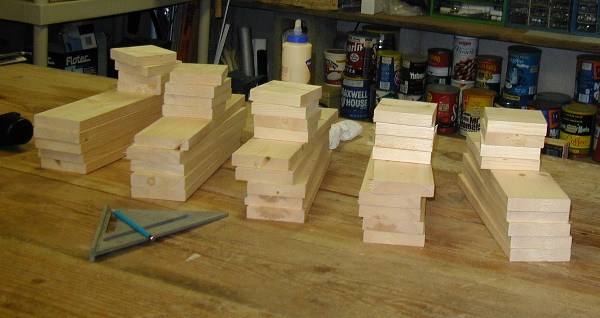
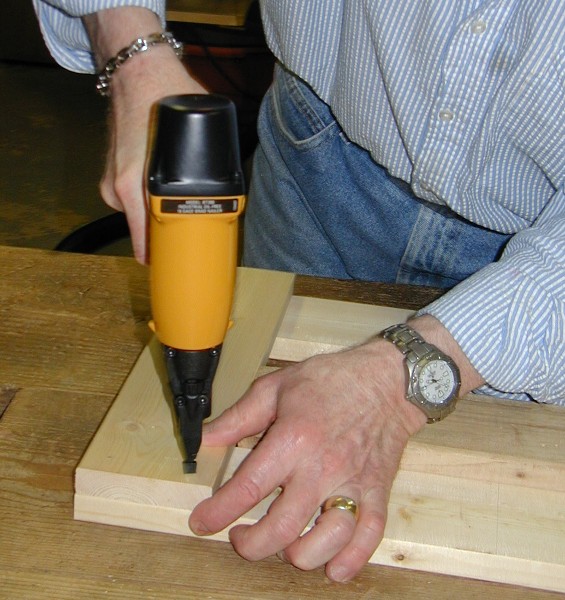
it is time to assemble them. A squeeze of wood glue, quickly spread over the area a cross-board will cover,
and fasten the pieces together using a nail gun powered by an air compressor. Good, but not good enough.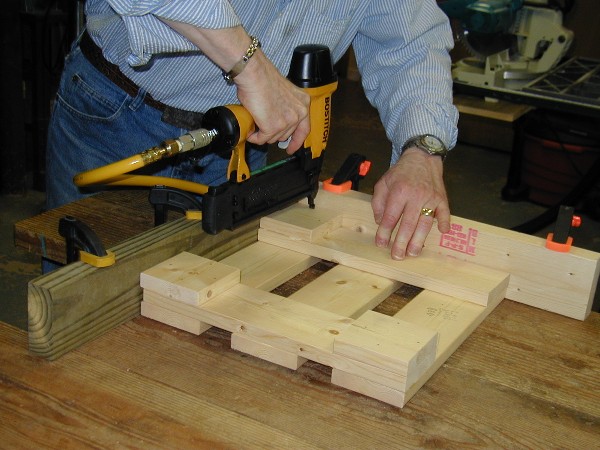
set with four 1 1/4 inch brads, turn the unit to the next corner, and repeat. Here he's assembled the five 14-inch long boards
and is attaching the feet. The time spent setting up the jig, checking with a try square, and clamping the boards
was well repaid in speed and accuracy in the assembly line production of the five stands.
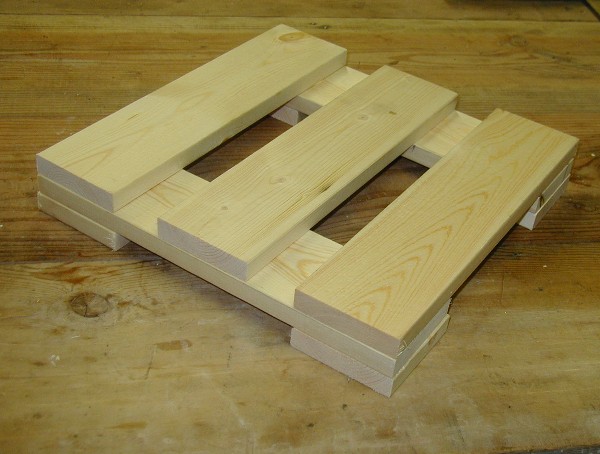

The stain provides a nice color, while the boiled linseed oil (it is purchased this way, you don't boil it at home)
is also, like the stain, a wood preservative. The mineral spirits thin the linseed oil and helps it penetrate into the wood.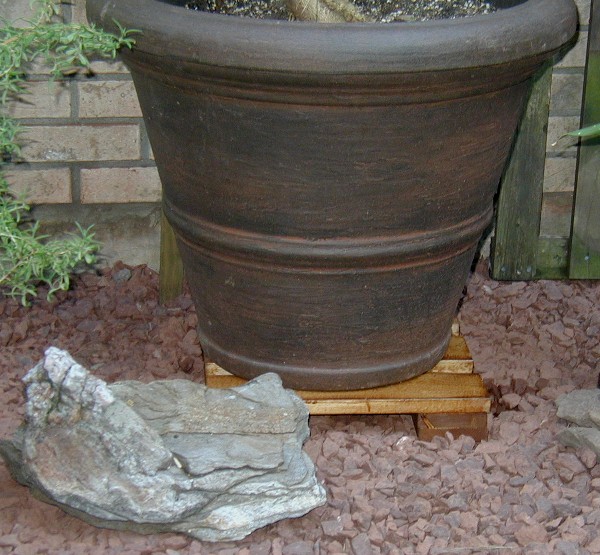
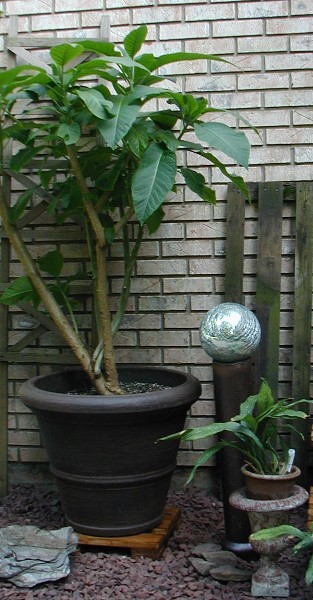
And I know the brugmansia will thrive, given it's elevation.
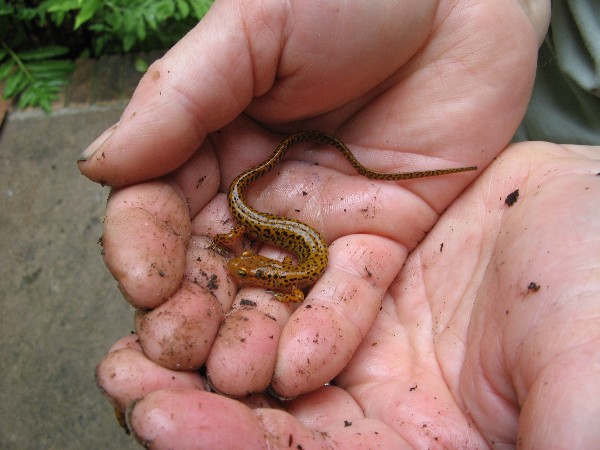
A couple of quick pictures and I let it go into a more secure pile of wet leaves.